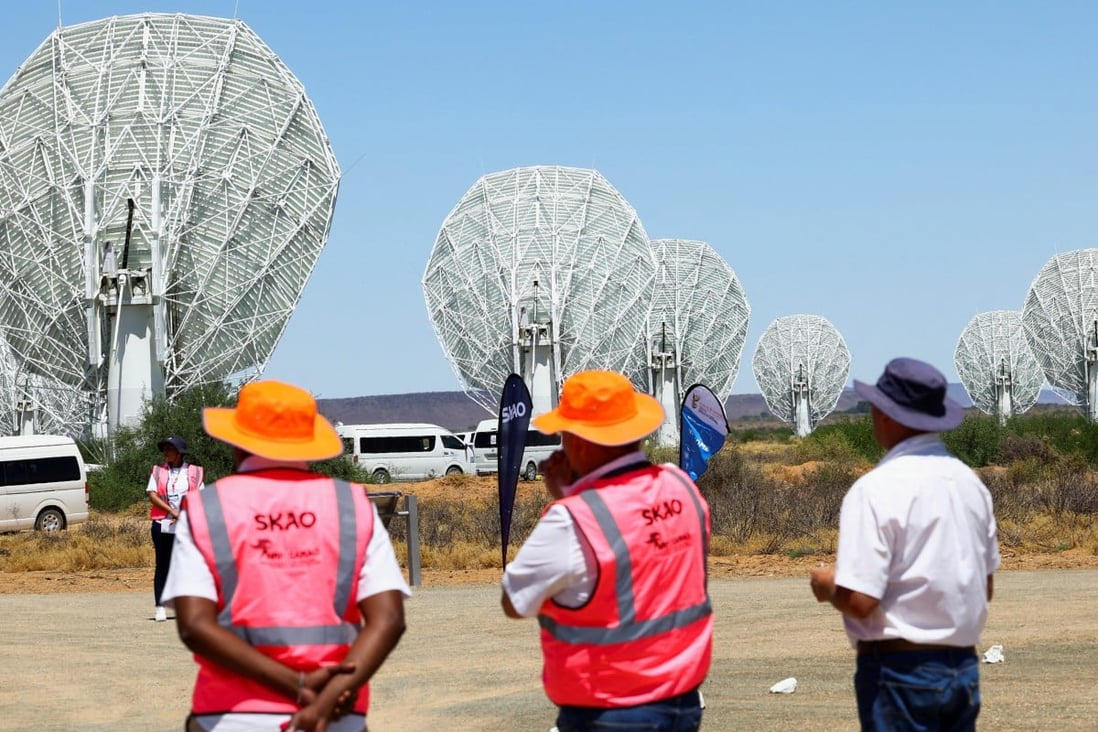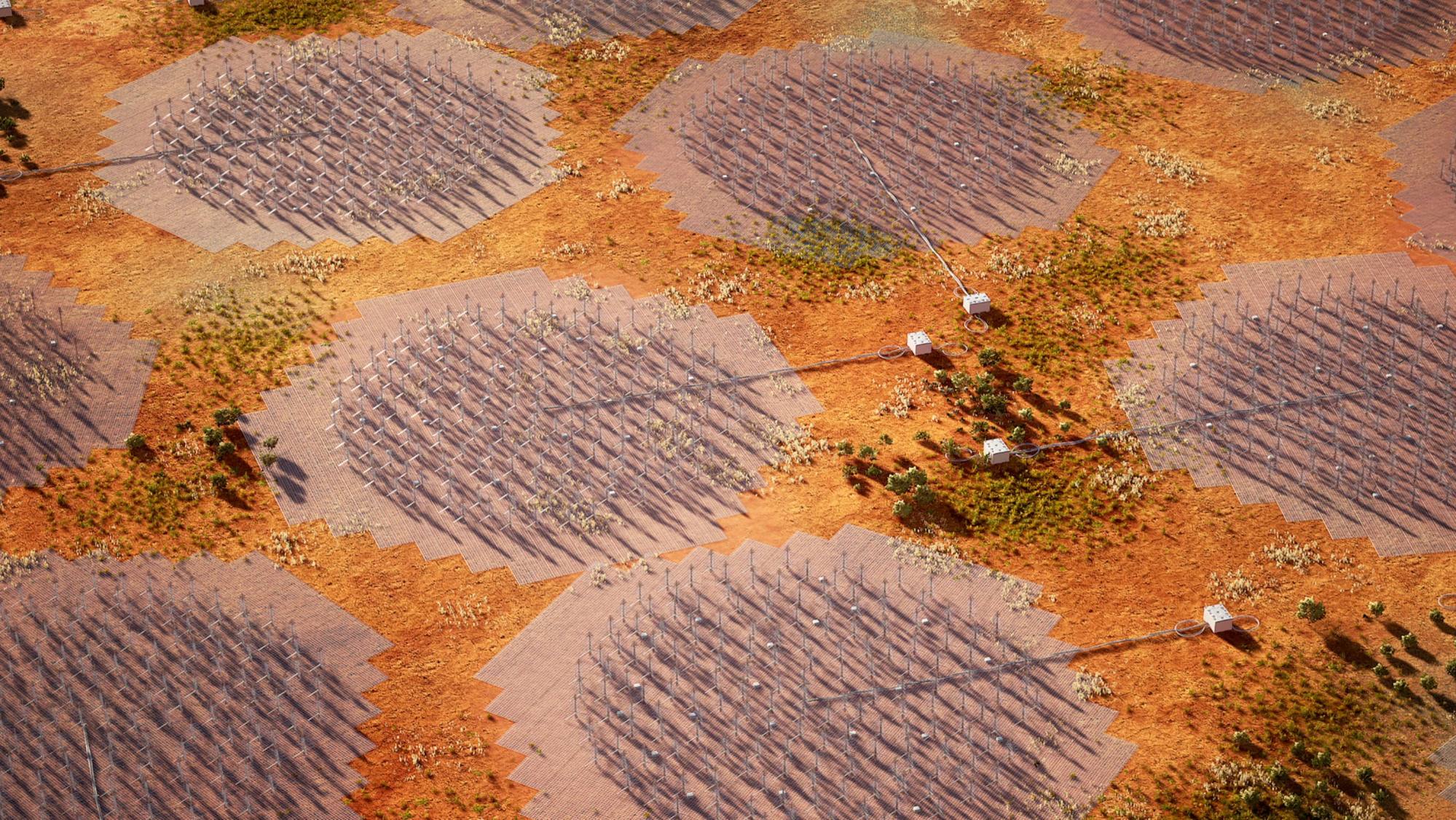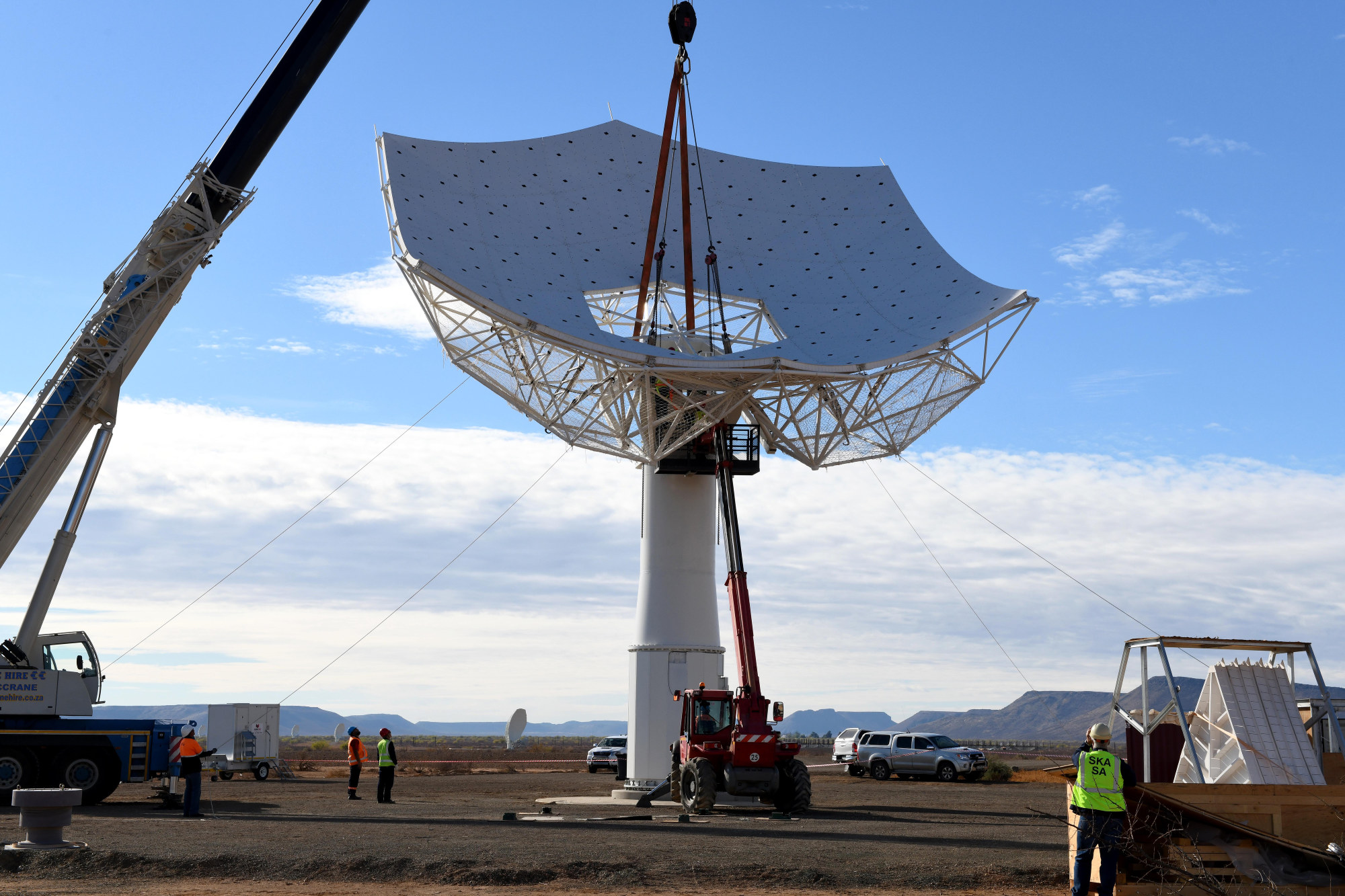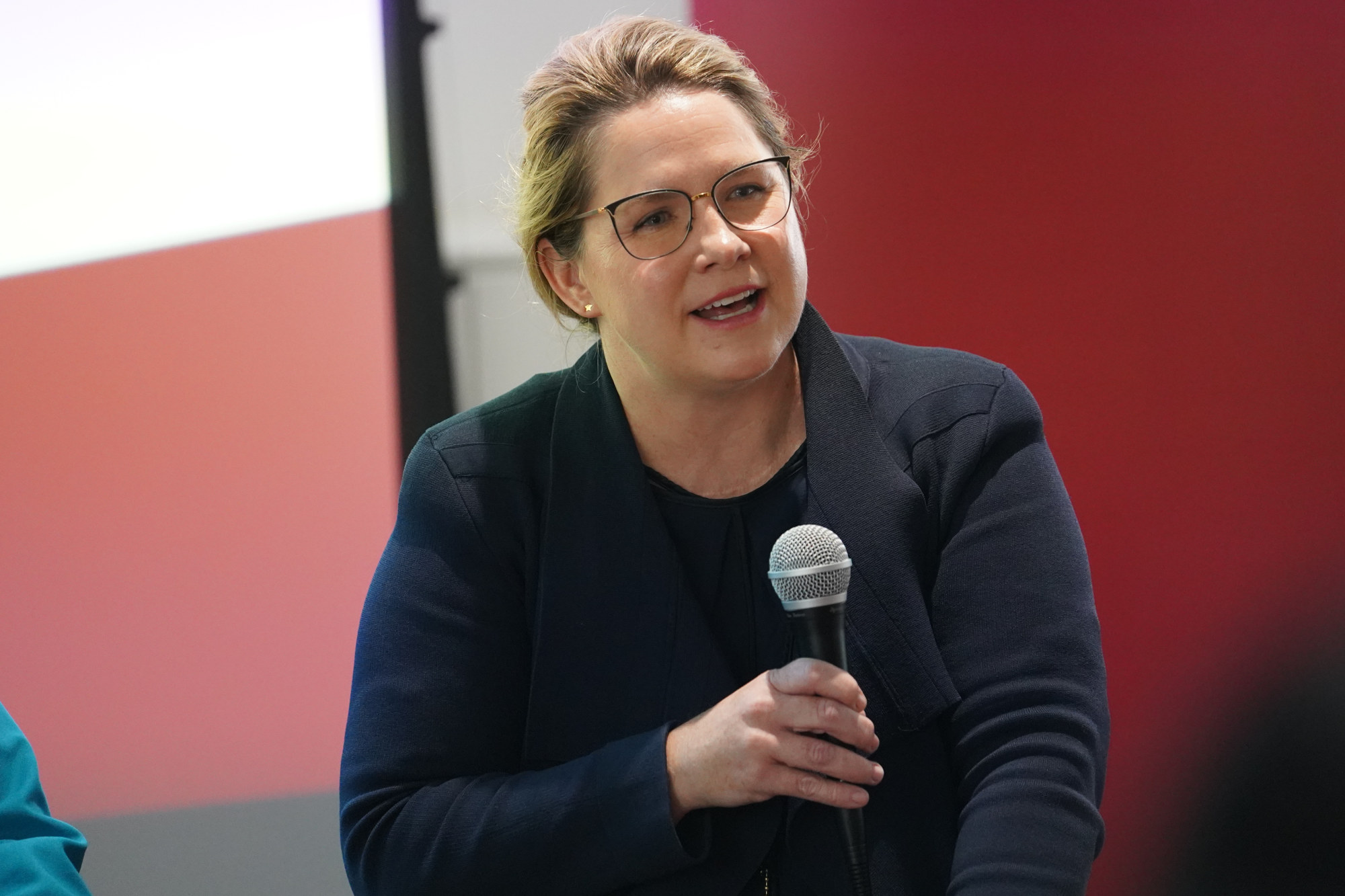Western Australia is co-host of a global radio telescope project, along with South Africa, with China, Italy, the Netherlands, Portugal and Switzerland also members
Projects like the Square Kilometre Array are viewed as ‘obvious candidates’ for China and Australia cooperation
Kandy Wong
Published: 9 Dec, 2022

The launch of construction of the Square Kilometre Array-Mid telescope outside the town of Carnarvon, in Northern Cape, South Africa. Photo: Reuters
China and Australia mark the 50th anniversary of diplomatic and trade ties in December. Post reporter Kandy Wong recently attended the 12th Australia-China Youth Dialogue, and her four-part series looks at various aspects of the relationship between Beijing and Canberra. In part two, she looks at potential science cooperation between the two countries.
Western Australia expects to step up its space research cooperation with China, according to a top Australian government official, in a move aimed at utilising its copious scientific resources, while also boosting local innovation, investment and jobs.
Australia is a co-host of a worldwide radio telescope project, the UK-headquartered Square Kilometre Array, along with South Africa, while China, Italy, the Netherlands, Portugal and Switzerland are all members.
Construction 800km (497 miles) north of Perth, began on Monday, and more than 130,000 two-metre tall, Christmas tree-shaped antennas will be built as part of the project.
Minister for Industry and Science Ed Husic, who officiated at the groundbreaking ceremony, said the project is expected to attract an estimated A$1.8 billion (US$1.2 billion) in foreign income flows to Australia over its first 30 years and create around 350 medium-term jobs.

Artist’s impression of low-frequency stations forming the Square Kilometre Array radio telescope, to be built in Western Australia. Photo: Australia’s Department of Industry, Science and Resources/AFP
“[We are] confident that Western Australia will continue to be an important investment location for China,” Western Australia premier Mark McGowan told the Post at the end of last month.
The low-frequency antennas located at Murchison Shire have already attracted some of the world’s best researchers, astronomers and scientists, according to McGowan, with Western Australia already home to a range of radio astronomy infrastructure at the Murchison Radio-astronomy Observatory.
He added that Western Australia is eager to build on more than 60 years of experience in the space industry to leverage the economic and social benefits from the project.
“My government is committed to strengthening its relationship with China into the future,” said McGowan.
“Our geographic location, dry environmental conditions, radio quiet zones and clear skies provides an attractive setting for major space projects.”
Science is not bound by national borders, and innovation is a never-ending endeavourWang Zhigang
South Africa’s Karoo region will carry the core of the high- and mid-frequency dishes for the Square Kilometre Array project, which will be the largest radio telescope in the world when completed in 2028.
The project – which aims to allow scientists to use the telescopes to collect data for analysis to enable them to study the evolution of the universe, explore the origins of life and understand the nature of gravity – has also attracted interest from the likes of France, Spain, Germany, Canada, India, Sweden, South Korea and Japan.
Projects like the Square Kilometre Array are “obvious candidates” for China and Australia cooperation, according to James Laurenceson, director of the Australia-China Relations Institute at the University of Technology Sydney.
The meeting last month between President Xi Jinping and Prime Minister Anthony Albanese also highlighted that “there is a clear need to translate that reconnection to concrete collaborations between the two countries”, added Laurenceson.]
“Science is not bound by national borders, and innovation is a never-ending endeavour,” said China’s Minister of Science and Technology, Wang Zhigang, in a video statement released on Monday.
I’m very keen to see Chinese companies consider Perth as a technology hub for growing their businesses into the Australian marketTamryn Barker
Wang added that international “mega-science projects” can help improve international science and technology cooperation and deepen bilateral and multilateral exchanges.
“Our country is willing to join hands with all participating countries in global collaboration, jointly constructing, delivering and sharing the world’s largest synthesised aperture radio telescope to explore the vast universe and create a better future for mankind,” he added.]
Tamryn Barker, a founder at the Core Innovation Hub that focuses on the resources and energy sector, said the post-coronavirus era offers companies a new chapter to “revisit international partnerships and opportunities” on science and innovation.
“Currently we don’t have Chinese start-ups or Chinese businesses located [Western Australia],” she added.
“I’m very keen to see Chinese companies consider Perth as a technology hub for growing their businesses into the Australian market.”

Square Kilometre Array Observatory in South Africa.
Photo: Square Kilometre Array Observatory
The Western Australia government plans to promote science and innovation development by building the 100-hectare (247-acre) Australian Automation and Robotics Precinct in Perth, according to Barker.
The Core Innovation Hub will operate the facility that will help companies to test and develop new self-driving vehicles, sensor networks and other information technology systems.
“We’re inviting international companies to take part in building that ecosystem,” Barker added.
“I think we have a lot to learn from China in this space because it is already leading the world in automation.”
The Western Australia government plans to promote science and innovation development by building the 100-hectare (247-acre) Australian Automation and Robotics Precinct in Perth, according to Barker.
The Core Innovation Hub will operate the facility that will help companies to test and develop new self-driving vehicles, sensor networks and other information technology systems.
“We’re inviting international companies to take part in building that ecosystem,” Barker added.
“I think we have a lot to learn from China in this space because it is already leading the world in automation.”

Tamryn Barker, founder at the Core Innovation Hub. Photo: 12th Australia-China Youth Dialogue
Western Australia has the skills, according to Barker, but needs Chinese partners to scale up businesses.
However, the Australian government’s support for research collaboration involving China has become lukewarm in recent years over national security reasons, according to Laurenceson.
The Australian Research Council has awarded just 23 grants for Discovery Projects – that seek to expand the knowledge base and research capacity in Australia and offer economic, commercial, environmental, social and/or cultural benefits – that involve collaboration with China this year, down from an average of 61 between 2019-21.
“Still, the increased risk mitigation frameworks that Australian universities have applied in recent years to collaborate with China, at Canberra’s insistence, won’t be removed,” Laurenceson added.
“There is a sense that there may be more obstacles still to come, but the full extent of that is not yet clear.”
There is a sense that there may be more obstacles still to come, but the full extent of that is not yet clearJames Laurenceson
Wu Xiangping, China’s lead scientist on the Square Kilometre Array project, said in 2018 at the Forum on China-Africa Cooperation in Beijing that his team was eager to remain at the forefront of the pioneering development and China would speed up its cooperation with South Africa.
China has sped up its own scientific development in space survey in recent years and has built the world’s largest single-dish radio telescope in southwestern Guizhou province.
Last year, the Chinese Academy of Sciences granted 10 per cent of the Five-hundred-metre Aperture Spherical Telescope’s observation time to international astronomers.
The Chinese Academy of Sciences also said early this year that it had set up committees to establish data-sharing policies, select major projects, plan the direction of research and handle time allocation and users.

Kandy Wong
Kandy Wong returned to the Post in 2022 as a correspondent for the Political Economy desk, having earlier worked as a reporter on the Business desk. She focuses on China's trade relationships with the United States, the European Union and Australia, as well as the Belt & Road Initiative and currency issues. She graduated from New York University with a master's degree in journalism in 2013. An award-winning journalist, she has worked in Hong Kong, China and New York for the Hong Kong Economic Journal and the Financial Times, E&E News, Forbes, The Economist Intelligence Unit, Nikkei Asia and Coconuts Media.
No comments:
Post a Comment